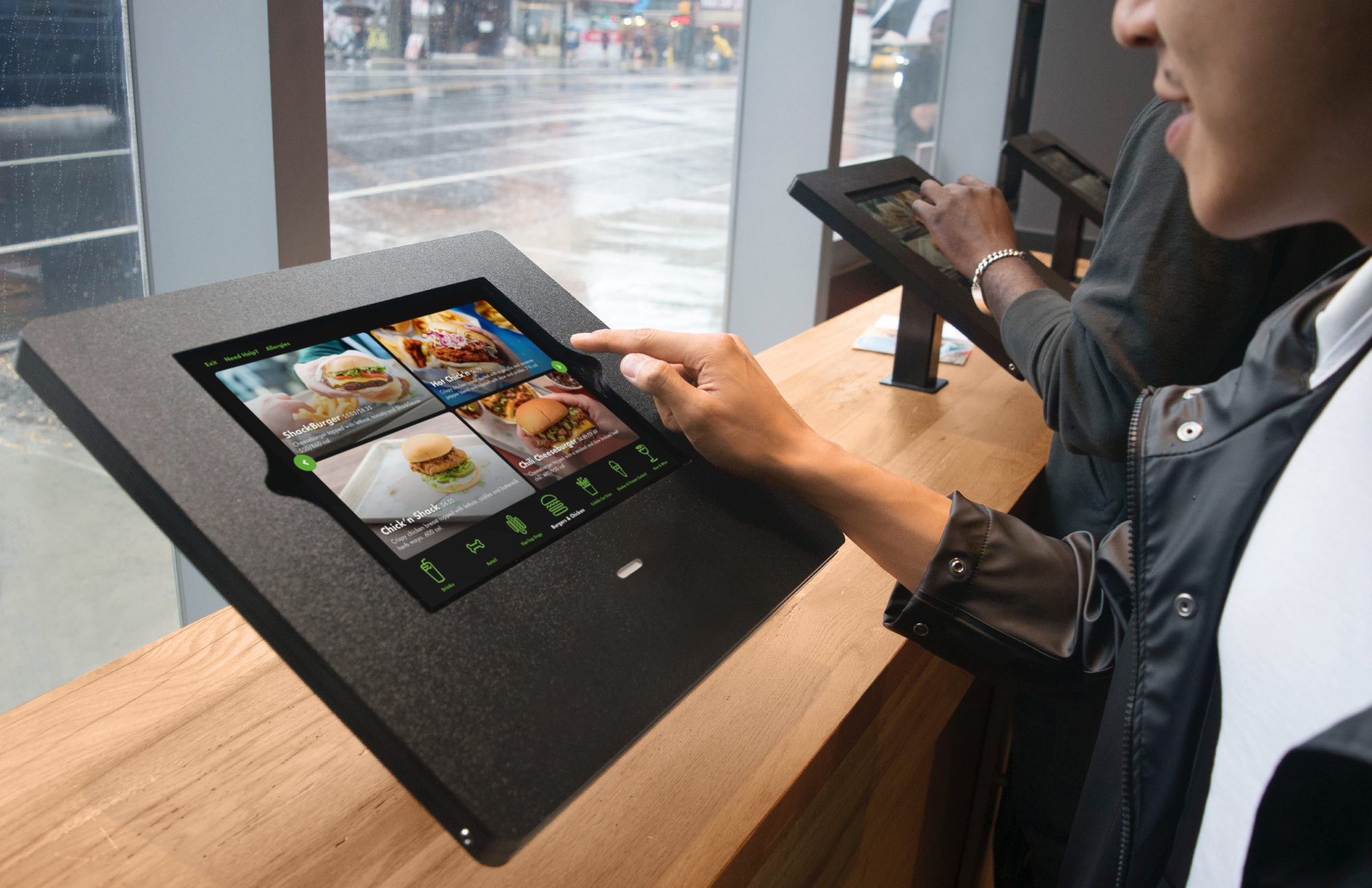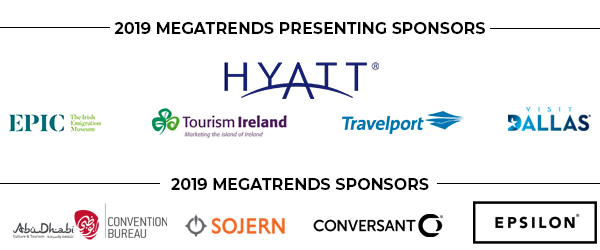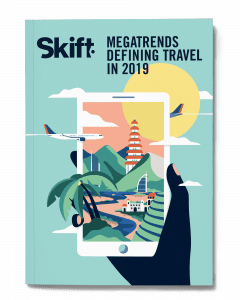Restaurant Megatrends 2019: Labor Crunch Determines In-Restaurant Changes

Photo Credit: Self-service kiosks at a Shack Shake in New York City. Square
Skift Take
From sourcing smart technology integrations to managing staff more effectively, operators are rethinking how their restaurants are run in the face of rising labor costs and an ongoing war for industry talent.
We’ve just released our annual industry trends forecast, Skift Restaurant Megatrends 2019. You can read about each of the trends on Skift Table as well as download a copy of our magazine here.
Earlier this year, the Cheesecake Factory experienced the worst stock decline within one day in nearly 20 years. In a dismal second-quarter earnings report, the restaurant chain revealed that it had missed revenue estimates by enough that it had to lower its profit guidance for the year. The top reason for the misses? Rising labor costs.
A day before Cheesecake’s earnings were released, the U.S. Department of Labor had announced a significant post-recession milestone. Over the past year, American workers have logged the highest pay increase in the decade since September 2008, according to the the department’s employment cost index, which measures labor costs (including wages, salaries, and benefits) across the nation.
That also means that labor costs are skyrocketing. The minimum wage rose in eighteen states across the U.S. throughout 2018, and is scheduled to rise again in over 20 states in 2019. In September 2018, the U.S. Bureau of Labor Statistics recorded the nation’s unemployment rate at 3.7 percent, the lowest that it’s been in nearly 50 years.
In other words, workers are both increasingly expensive to retain and in very high demand. This is great news for restaurant employees: it’s never been easier to get a job in the industry, and employers are often paying above the minimum wage in an effort to increase staff retention rates. For restaurateurs, however, rising labor costs need to be managed. In order to do that, operators are reconsidering every inch of how their restaurants are run.
Leveraging In-Restaurant Technology
At the Cheesecake Factory, labor costs accounted for 35 to 36 percent of sales throughout 2018. Five years ago, the company’s labor costs hovered in the 31 to 32 percent range.
It’s not possible to simply absorb those cost increases, at the independent restaurant level or at the national chain level. Changes to operations have to be made.
“If labor continues to be an incremental pressure, you have to look holistically at the profit and loss statement. What would change is the point at which technology in the restaurant becomes more affordable relative to the price of labor,” Matthew Eliot Clark, executive vice president and chief financial officer of The Cheesecake Factory, said on the company’s 2018 second-quarter earnings call.
That doesn’t mean that robots are going to start dishing up cheesecakes. It does mean that the restaurants will better leverage labor management tools and subtler forms of automation to implement more effective staff training models, ensuring shifts are properly staffed to cut down on extra costs associated with either overstaffing or understaffing, and automate manual labor where it makes sense.
Shake Shack has been slowly installing order kiosks in a handful of new restaurants in part to offset labor costs especially in markets like Seattle, where the minimum wage is high and labor regulations are more stringent.
“When it comes to kiosks, it’s absolutely one of our goals to decrease the payroll over time, and the number of people that we need,” Shake Shack CEO Randy Garutti said on an earnings call in August 2018. “We have not stressed that in these early days. Of course, that’s a long-term goal.”
The point isn’t to replace all of Shake Shack’s front-of-house employees, but rather hire and train a skilled hospitality team to focus on what can’t be replaced by a kiosk: supporting and guiding the customer experience to make repeat diners out of everyone who walks in the door.
Rethinking Staff Management
Salar Sheik, the owner of restaurant consultancy Savory Hospitality in California, told Skift Table in a previous interview that it’s not uncommon to see restaurants in the state with labor costs that run as high as 40 percent of total sales.
Sheik said that soaring labor costs are frequently the top reason that he gets called in to help restaurant operators. Technology solutions are key, but Sheik has also recommended outsourcing some of the kitchen’s prep labor by considering pre-packaged food items versus paying staff to prep every component on the menu.
“We’re really sourcing our products and our menu with labor as number one priority,” Sheik said. “We’re really nickel-and-diming ourselves.”
When New York City raised its tipped minimum wage from $5 to $7.50 an hour in 2015, Sylvia’s, a decades-old staple of the dining scene in Harlem, New York, offset the increase in labor costs by raising menu prices, getting more strategic about scheduling, and “making sure we had strong staff members and weren’t keeping underperforming employees,” the restaurant’s director of operations, Taniedra McFadden, told Skift Table in June 2018. “We had to keep really strong people who could make every step count.”
At the time, McFadden said that Sylvia’s labor costs typically hover at around 21 to 22 percent (lower than average for a full service restaurant) because she closely monitors staff training and development. “An employee is not just a dishwasher. We cross train and use them in different areas instead of bringing in a brand new person to fulfill one need,” McFadden said, although she noted that these fixes only go so far and might not be enough to offset labor increases if the tipped minimum wage (set to raise to $10 in 2019) is potentially eliminated while also managing the upcoming city minimum wage increase (set to raise to $15 in 2019).
“I want to be optimistic that we’ll figure it out, we’ll make a way, but the way we do business is going to be different,” McFadden said. “It probably won’t look like what we do today.”
Pinning Hopes on Fast Casual
Fast casual salad and bowl shops and counter service restaurants aren’t popping up on every corner just because of a sudden rise of speedy eaters who prefer a do-it-yourself dining atmosphere. The business model thrives on lower labor costs: there’s no table service, less people are needed to staff the restaurant, and employees can more easily cross train on a variety of stations.
The New York Times reported that in San Francisco, one of the most challenging labor markets in the country, popular Greek counter service restaurant Souvla operates with labor costs in the mid-20s. Less than half a mile away, at Jardinière, a French fine dining restaurant run by chef Traci Des Jardins, labor costs take up 43 percent of total sales.
National restaurant chains are also turning their sights towards more profitable fast casual models. The Cheesecake Factory will be opening a new fast casual concept, Social Monk Asian Kitchen, in Los Angeles in early 2019. Cracker Barrel launched a breakfast and lunch-only fast casual concept in 2016 called Holler & Dash, and has since expanded it to seven locations. Stephen Joyce, the CEO of Applebee’s parent company Dine Brands told Business Insider that the company is shopping around for a fast casual concept to add to its portfolio.
“We want to get into a category that’s growing faster than the categories we’re in,” Joyce said last May. He hopes to close on a deal in 2019.
Download Your Copy of Skift Megatrends 2019


The travel industry's top event returns this fall.
September 16-18, 2025 - NEW YORK CITY

